
3 minute read
SILVER & GOLD

EDIBLE METALLICS 101
BY JULIA FEDEROVA
Modern bakers have a lot of possibilities to impress clients. One of the most popular ways to create that “wow” moment is to work with metallics like gold, silver, and copper. First, whether you plan to decorate dummies or real cakes, all materials should be 100 percent edible.
Fortunately, we have a lot of suppliers who can offer edible dust, sprays, and leaves. “Nontoxic” means the product is more or less safe to eat, but it may not be digested properly. “Edible” means that the body can process it as regular food and this product won’t cause any harm.
The following is a primer on using edible metallic leaves to really bring a shine to your art. Do not hesitate to challenge and push yourself out of your comfort zone. Remember, new skills not only bring satisfaction to you as a professional, but they also bring money and more clients.
1. COVERING A DUMMY CAKE
Cover a dummy in fondant, making sure it is covered evenly without scars, dents, or elephant skin. I suggest
Self-taught cake artist Julia Fedorova is owner of Julia Fedorova Cakes, located in New York. Julia’s cakes and sugar-flower bouquets have won many admirers, awards, medals, and diplomas, including placing first at the ICES Convention, first place at the National Capital Area Cake Show, and winning gold awards at the New York Cake Show, SoFlo, and OSSAS. Julia has developed her own gum paste, veiners, cutters, and molds for making botanically correct flowers and she teaches how to create gorgeous sugar flowers and bouquets.
juliafedorovacakes.com instagram.com/juliafedorovacakes instagram.com/sweetartmaster covering the dummy with fondant three to four days prior to working with metallic leaves. Always wear cotton gloves when you work with edible leaves. Before attaching a leaf to the dummy, use a steamer to slightly wet the surface. The leaf will attach to the sticky surface right away. If you do not have enough experience in this field, use a very soft, flat, and wide brush to place the leaf on the
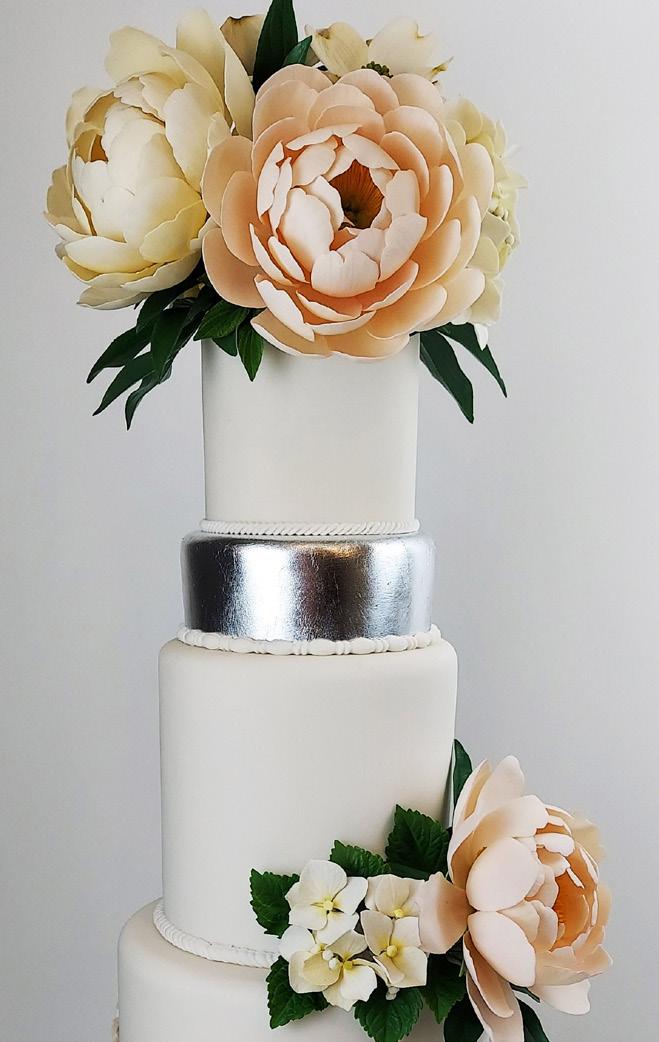
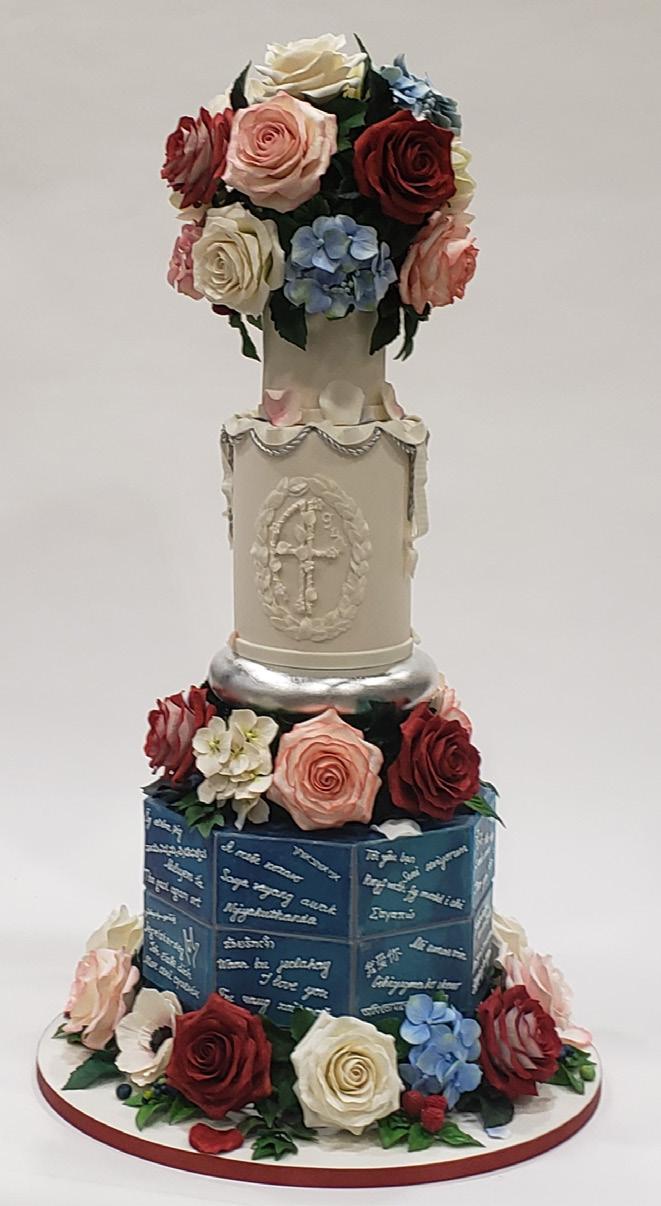
dummy. Applying with gloved fingers works just as well if you already have a little experience.
2. COVERING A REAL CAKE
The process of covering real cakes is almost the same, with one exception: Never steam the surface of a real cake. It does not matter if it is covered in buttercream, ganache, or fondant, as long as it is covered evenly. Take the cake from a refrigerator and start covering it with the leaves right away. Once you are done, put the cake back into the refrigerator or continue to decorate the cake.
3. ONLY A PERFECT CAKE WILL DO
Why am I emphasizing the perfect covering? When the cake is flawless, metallic leaves will highlight the beauty of the cake. In the case of any surface imperfections, these leaves will only shine a spotlight on them. Covering any shapes such as balls or rings with metallic leaves is not hard if the surface is smoothly coated with fondant or other finishes.
4. PAY ATTENTION TO DETAILS
Pay attention to the side of the leaves you are using. The bottom side is usually paler than the top. Both sides work just fine, but using different sides on one cake will be visible. Be mindful of this when applying the leaves.
5. COMPETITION ADVICE
If you use any metallic products— luster dust, leaves, sprays—for your competition cakes, do not forget to add the information about them in your masterpiece description for judges. ACD
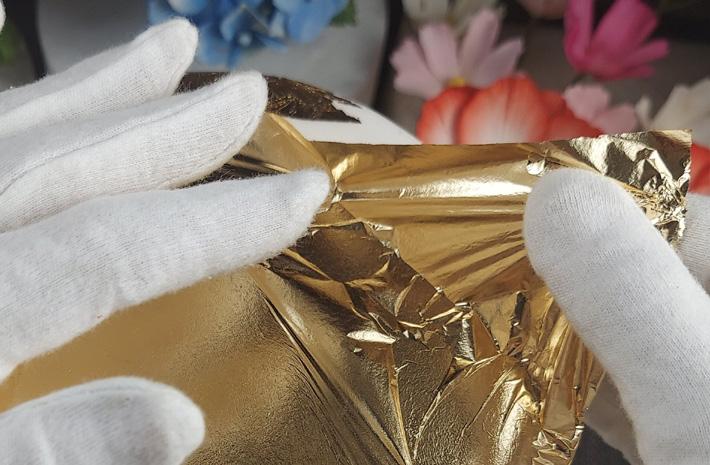
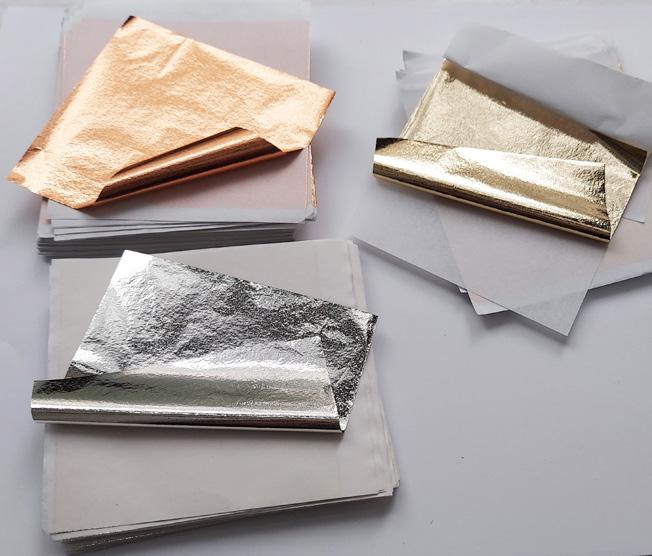
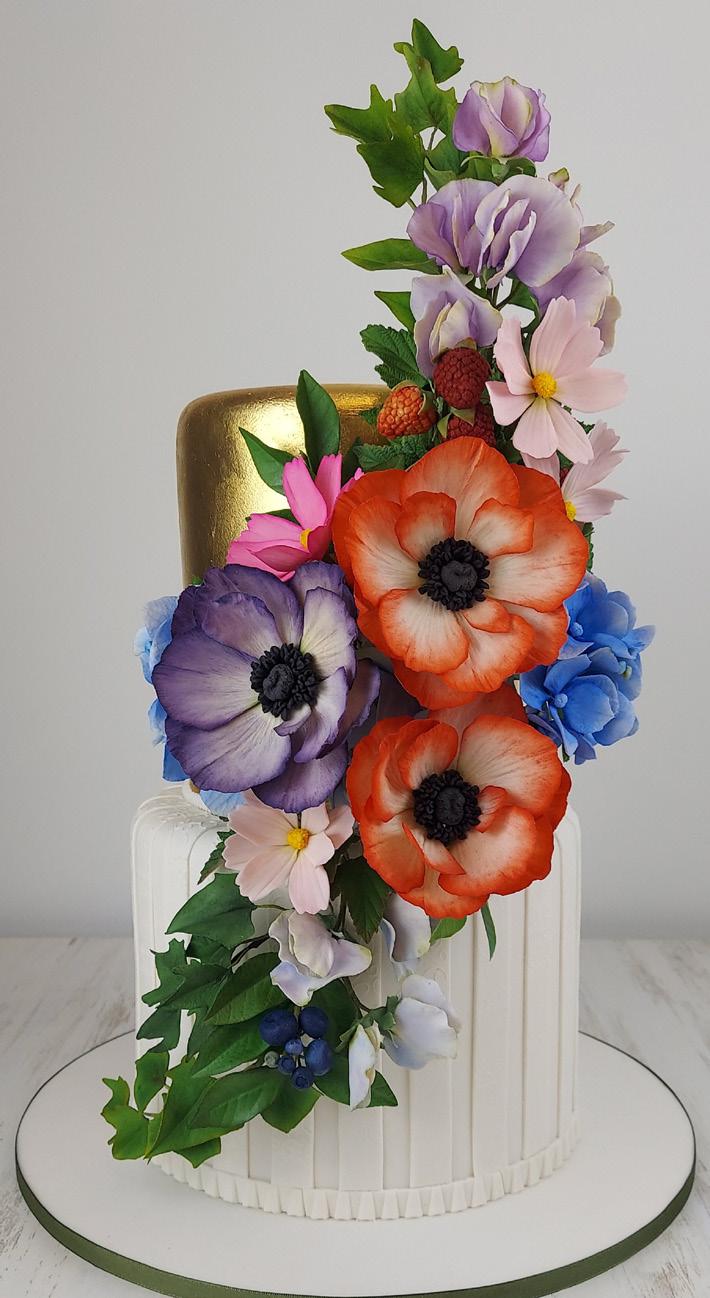
MORE PRO TIPS
Want to try other metallic applications? Here are some more pro tips!
LUSTER DUST
Have a few brushes ranging from very thin to large and make sure they are soft and high-quality. Do not use the same brushes for dusting flowers and working with metal dust. The rule of thumb is to mix the dust with high alcohol content products such as Everclear, which can also help clean spots if you accidentally touched a surface with the brush.
METALLIC SPRAYS
Remember to keep your work space safe. Set up a simple booth from a cardboard box to avoid work-space contamination.










